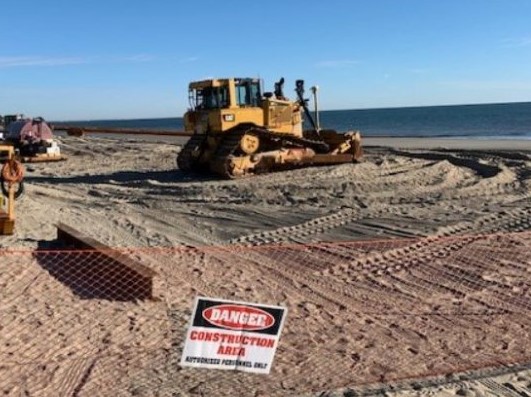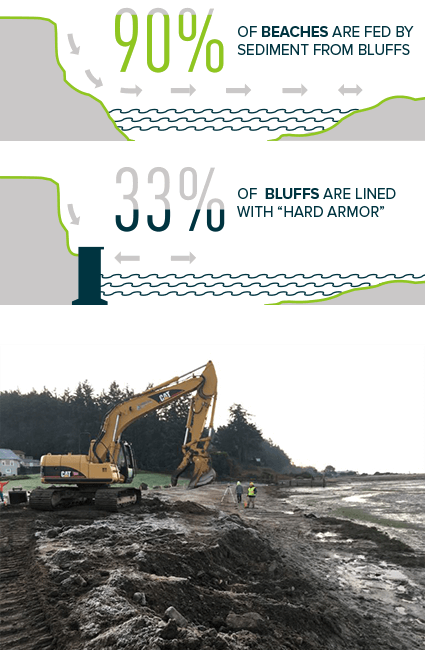Getting The Shore Protect Team To Work
Examine This Report about Shore Protect Team
Table of ContentsSome Known Incorrect Statements About Shore Protect Team The Ultimate Guide To Shore Protect TeamThe Of Shore Protect Team6 Easy Facts About Shore Protect Team DescribedShore Protect Team Things To Know Before You BuyThe Basic Principles Of Shore Protect Team All About Shore Protect Team
Reduction in property worth: As the area tourism is impacted by disintegration, so then is the economic situation. Buyers are less likely to look for a beach home that might be ruined at any type of moment by the upcoming flooding and disintegration emergency situation. Subsequently, property worth can drop profoundly and affect the entire region.Whether a beach is just tiny and jampacked or needs to close totally for the safety and security of the community and nearby residential properties, this considerably influences tourist. Consequently, neighborhood economic situations are impacted (https://populardirectory.org/Shore-Protect-Team_334644.html). Risk of injury: The increased threat of flooding and structural failings triggers a boosted risk of injury to neighboring vacationers and community members

is home to greater than 84,240 miles of shoreline with 41% of it revealed to the open sea. Coastal designers are in cost of securing the shore versus adjustments by minimizing the destructive effects of both all-natural and synthetic events. Coastline stablizing is straight relevant to their job. Beachfront hotels: Because coastline disintegration impacts tourism, it affects the success of beachfront resorts.
The Shore Protect Team Ideas
Coastal industrial businesses: No tourists implies no service. Coastal state parks: State parks that exist along coasts are at danger of damages.
Difficult stabilization utilizes synthetic frameworks as defense to control disintegration. Many kinds of tough stablizing like seawalls and sheet metal are not perfect for shoreline stablizing.
Examine This Report on Shore Protect Team
There's also insufficient proof of their performance depending upon the sort of coastline and local problems. Tough stablizing strategies have a tendency to be harder to mount and do not match the natural visual, sticking out like an aching thumb and damaging neighborhood environments in lots of situations. Coastline nutrients is the process of including lost sand and debris back to coastlines after disintegration has taken place.
TrapBags help in the procedure of coastline sustenance by safeguarding natural communities and permitting plants to grow. While this procedure can be expensive and is not irreversible, the pros tend to surpass the disadvantages. TrapBag obstacles offer several buildings that make them excellent for coastal and riverbank erosion defense. They're: Eco friendly: You can use native dirt both to surround and to fill up the TrapBags.

The Facts About Shore Protect Team Revealed
They can also be mounted without any hefty equipment. Economical: TrapBags are perfect for both little and large areas of shoreline.
Incorporated with a high building cost, this has brought about enhancing usage of various other soft design coastal administration options such as beach replenishment. Seawalls are built from various materials, many typically reinforced concrete, rocks, steel, or gabions. Other feasible construction materials include plastic, timber, light weight aluminum, fiberglass composite, and biodegradable sandbags made from hemp and coir. The appropriate seawall design counts on location-specific elements, including surrounding erosion procedures. There are 3 main types of seawalls: vertical, rounded, tipped, and piles (see table below).
Natural barriers, such as reef and mangrove forests, avoid the spread of tidal waves and the flow of coastal waters and alleviated the flooding and rise of water. A cost-benefit approach is a reliable means to determine whether a seawall is suitable and whether the advantages deserve the cost.
Some Known Questions About Shore Protect Team.
A seawall is a fixed feature which can clash with the dynamic nature of the coast and hinder the exchange of debris in between land and sea. Advantages and disadvantages of seawalls according to Short (1999) Benefits Drawbacks Long term solution in comparison to soft beach nutrients (https://shore-protect-team.locable.com/profile/).

This can cause coastlines to dissipate, rendering them ineffective for beach goers. Generally, seawalls can be an effective way to manage coastal erosion, yet just if they are created well and out of materials that can stand up to the force of recurring wave energy.
See This Report about Shore Protect Team
The proper seawall design counts on location-specific elements, consisting of bordering erosion processes. There are 3 main kinds of seawalls: vertical, rounded, stepped, and piles (see table below). A record released by the United Nations Environment Programme (UNEP) recommends that the tidal wave of 26 December 2004 triggered less damages in the areas where all-natural obstacles existed, such as mangroves, coral reefs or seaside plants.
Natural obstacles, such as reef and mangrove forests, stop the spread of tidal waves and the circulation of seaside waters and mitigated the flooding and surge of water. A cost-benefit strategy is an effective method to identify whether a seawall is proper and whether the benefits are worth the expenditure.
How Shore Protect Team can Save You Time, Stress, and Money.
A seawall is a static feature which can contrast with the dynamic nature of the coast and impede the exchange of sediment in between land and sea. The table below sums up some favorable and negative results of seawalls which can be made use of when contrasting their effectiveness with other seaside monitoring choices, such as beach nutrition. [] Advantages and drawbacks of seawalls according to Short (1999) Benefits Negative aspects Long-term option in comparison to soft coastline nutrition. shoreline protection.

This can create coastlines to dissipate, providing them useless for coastline goers. Generally, seawalls can be an effective way to manage seaside erosion, yet just if they are created well and out of materials that can hold up against the force of continuous wave energy. Some understanding is needed of the seaside procedures and morphodynamics specific to the seawall place.